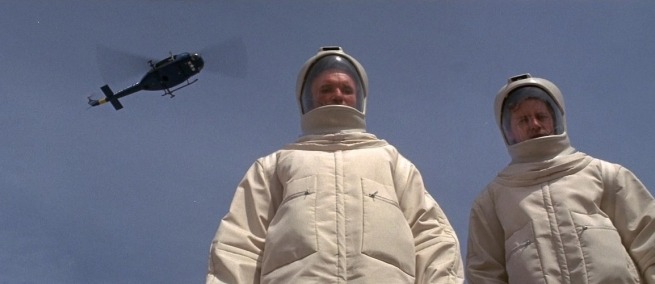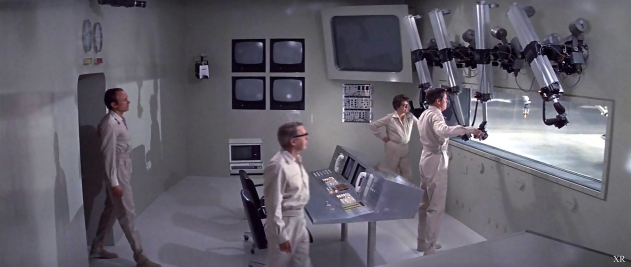

Why is it that we, as humans, fear the unknown and the unknowable? In our history of exploring the other worlds in our solar system, and in our history of facing public health crises, such as COVID-19, there has been a fundamental tendency to approach the unknown in a way that converts precautions and conservatism into fear.
How do we, as humans, take precautions without being dominated by fear?
In the context of NASA missions (N. B., in the book and film, THE ANDROMEDA STRAIN, the virus strain came from a US Army mission), NASA has over 50 years of looking at exploring the solar system with conservatism in mind from a public health point of view, while also keeping a planetary ecosystem health point of view via a discipline known as planetary protection. This discipline is found at the intersection between microbiology, space science, engineering (the art of building a spacecraft), and diplomacy. It only comes into play for most Earth dwellers when NASA considers bringing samples back from another part of the solar system.

Still from THE ANDROMEDA STRAIN
The necessary precautions when returning samples from another planetary body are based on the best available understanding at the time of the mission’s design, build, launch and operation. For example, during the Apollo missions which brought back samples from the moon in the 60s and 70s, the first few missions took precautions akin to what would be expected for handling viruses or other disease-carrying microorganisms that could lead to rapid, dramatic infectious disease and death, like Ebola. As we learned more about the lunar samples with our laboratories on Earth, we learned that we could relax those precautions. In the modern era, when NASA returns samples from other planetary bodies—such as comets and asteroids—we do not take biological precautions; there is enough evidence that life as we know it cannot thrive on these small dry and desolate bodies, subjected to the harsh radiation of space.
In the era of COVID-19, we see similar patterns—without a vaccine and with limited understanding, we have lived through quarantine, lockdowns and proper precautions—wearing masks and practicing hand hygiene. As we learn more in time, the approaches to proper precautions are evolving.
Since fear is such a deep and moving force, while this is a piece for the Museum of the Moving Image, emphasis on moving images, I am choosing to focus on the sound behind the images—the soundtrack of THE ANDROMEDA STRAIN. The film tells the story of a team of top scientists who are sent to a secret, underground facility to investigate the biology of a deadly microorganism that has arrived from outer space in order to stop its worldwide spread.The film’s shrill tones and minor keys are all-pervasive, driving an undercurrent of fear.
There are many examples of experiments in music theory where keys of songs/themes are modified from minor to major tones, leading to overall changes in perception of the “feeling” of the music (For example, see: Krumhansl, C. L.1997. An exploratory study of musical emotions and psychophysiology. Canadian Journal of Experimental Psychology, 51, 336–352.). The reactions that we have to the key of a musical piece couples strongly to our stereotypes and culturally conditioned reactions (See for example, volume IV of the classic series of studies by Marianna Pinchot Kastner and Robert Crowder, Perception of the Major/Minor Distinction, Music Perception: An Interdisciplinary Journal, vol 8, No. 2, Winter 1990, 189-201). What if the soundtrack was modified to remove dissonance and shift minor tones to major tones? Would the movie carry a tone of triumphantness? Of the excitement of exploration? Of the thrill of the discovery of life?
What if we changed our own mental soundtracks in the experience of COVID-19 and of the return of samples from places like Europa and Enceladus, moons of Jupiter and Saturn, respectively, that show evidence of liquid water beneath the surface through observations of water plumes shooting into space several hundred kilometers, or planets like Mars?
Creative problem solving is known to thrive in positively framed environments vs. negatively framed environments (see for example, Alice B. Eisen and team’s study, Positive affect facilitates creative problem solving, Journal of Personality and Social Psychology, 1987, Vol. 52. No. 6, 1122-1131). Would our scientists and the general public have handled the unforeseen differently? How about ourselves?
What if that soundtrack was filled with promise and protection, which when coupled with proper precautions open a wide portal into the excitement of scientific discovery versus a narrowed corridor of fear, coupled with peril and persecution? How would we see the protection of our biosphere or of ourselves? How would THE ANDROMEDA STRAIN plot change?
Perhaps the soundtrack is everything…
TOPICS